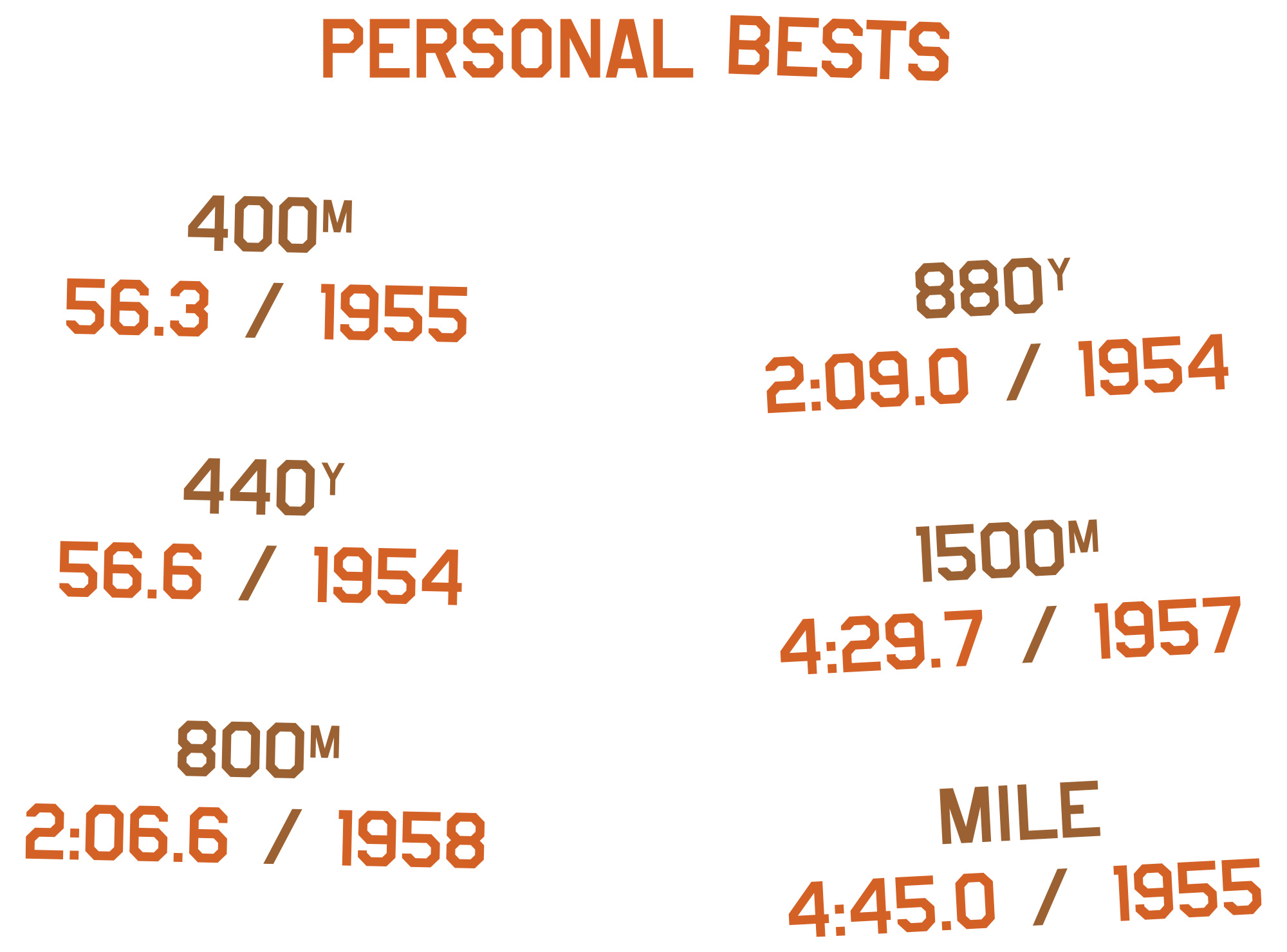
Diane Leather
Nobody Else
is in Sight
WORDS BY KATIE HOLMES
PHOTOGRAPHY COURTESY OF BIRCHFIELD HARRIERS
In the 1952/53 winter season, Diane Leather burst onto the British athletics scene, winning both the Junior and Senior English National Cross Country Championships just months after taking up athletics. By the end of 1953, she was one of Britain’s best middle-distance runners. In her first mile race in September 1953, she ran 5:02.6, a world best. The stage was set for Leather to become the first woman to break the 5-minute mile.

Leather was born on January 7th, 1933, in Streetly near Birmingham. She enjoyed playing lacrosse, netball and field hockey at school.
Inspired to take up athletics after watching the 1952 Helsinki Olympics, Leather joined the Birchfield Harriers in Birmingham. The club, founded in 1877, had a long history of producing top class athletes. Leather joined a strong women’s team and trained five times a week under the supervision of pioneering women’s coach Dorette Nelson Neal, fitting training around her chemistry studies and work at the University of Birmingham’s laboratory.
There was huge inequality between men’s and women’s athletics. At the 1952 Olympics, men competed in 14 track events and the marathon, whereas women had four track events. The longest of these was just 200 meters.
British and Russian women competed officially in the mile and 1500m respectively at their national championships. But because the women’s mile and 1500m were not recognized as world records by the IAAF (now World Athletics), most countries, including the USA, did not include the distance in their championships. Women had no opportunity to compete at the distance internationally, and their performances were designated “world bests” not world records.

Men, by contrast, had more opportunities to race both domestically and internationally. Roger Bannister competed in the 1500m at the Helsinki Olympics and had international rivals, including the Australian John Landy and Wes Santee of the USA. There was huge interest in who would be the first man to break the 4-minute barrier and on May 6th, Bannister achieved it, running 3:59.4 in Oxford.
After this, interest in the women’s 5-minute barrier increased. Edith Treybal of Romania had lowered the world best to 5:00.3 in November 1953. Sub-5 was tantalizingly close, and Leather was the clear favorite. A few days after Bannister’s breakthrough, Birchfield Harriers announced that she was to make an official attempt at an event in Birmingham on May 26th. There were masses of press coverage, with some journalists excitedly stating that Leather was going to “do a Bannister”. Pathé News filmed the race. Running without pacers and leading from the start, Leather, who had already run sub-5 in training, came very close with 5:00.2. She admitted afterwards that she had been affected by all the attention her attempt had received.
Three days later, on May 29th, competing at the Midland Counties Championships, Leather ran a British record for 880 yards of 2:14.1. Feeling good, she decided to enter the mile race despite poor weather conditions. Heavy rain overnight had left the cinder track waterlogged and there was an 8 mph cross wind. Watched by her parents, Leather led the field, crossing the finish line in 4:59.6 and earning herself a place in athletics history. When told her time she said, “Oh good. At last!”


In 1955, Leather set two further world bests, reducing the time to 4:45.0.
Leather’s world records came at the half mile (880 yards), the longest distance for women recognised by the IAAF. She was twice part of British teams that set the 3x880 yards world record in 1953 and 1954. She also set an individual world record for 880 yards in 1954 (2.09.0). Leather won silver in the 800m at the European Championships in 1954 and 1958. But by the time the 800m was reintroduced to the Olympics at Rome in 1960, she was no longer at her peak and was eliminated in the first round.
In cross country races, as on the track, Leather usually led from the front, often winning by a large margin. She was both the Midlands Counties and the English National Cross Country Champion for four consecutive years, 1953 – 1956. The national course was usually two and a half miles over rough ground and sometimes featured ditches and water. In the 1953 race, Leather won by over a minute despite being troubled by a dog on the course. She also competed in four unofficial International Cross Country events (England versus Scotland) held between 1954 and 1957, finishing first three times.
Women who ran the mile were pushing the boundaries of the sport. Diane Leather and her contemporaries had disproved lingering fears that longer distances were harmful to women, but progress was slow at the male-dominated IAAF and IOC. The IAAF did not recognize the mile and 1500m until 1967. Five years later, the 1500m was at last added to the Olympics program.

